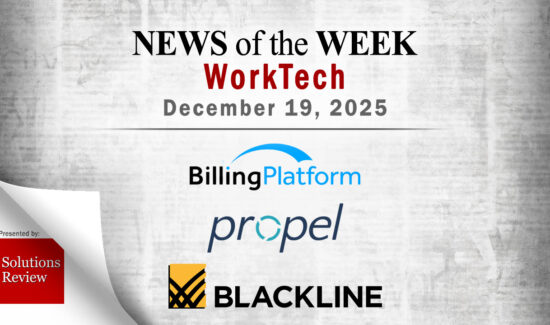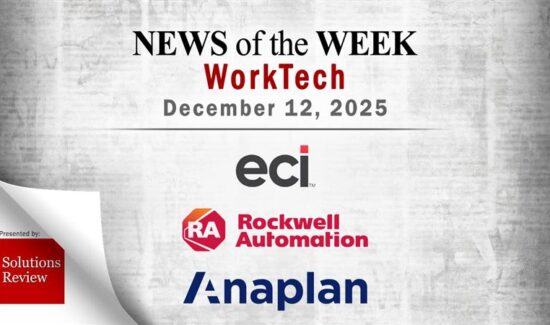Key Takeaways: 2024 Magic Quadrant for Warehouse Management Systems


The editors at Solutions Review have highlighted the updates in the 2024 edition of Gartner’s Magic Quadrant for Warehouse Management Systems and summarized the findings.
Analyst house Gartner Inc. recently released the 2024 version of its Magic Quadrant for Warehouse Management Systems. According to Gartner, a warehouse management system (WMS) is “a software application that helps manage and intelligently execute the operations of a warehouse, distribution center (DC) or fulfillment center (FC).” These solutions can help businesses monitor warehouse activity, track inventory, adjust processes, sort products, and achieve more accurate visibility into their warehouse operations.
Gartner also summarizes some of the standard capabilities WMS should offer, which include functionalities for receiving, cross-docking, stock locating, inventory management, replenishment, quality inspection, order allocation, location management, picking, wave planning, staging, truck loading, cycle counting, shipping, automated material handling equipment (MHE) interfaces, and more.
Key Takeaways: 2024 Magic Quadrant for Warehouse Management Systems
In this updated Magic Quadrant, Gartner identifies twenty of the most significant Warehouse Management System providers in the marketplace. The researchers behind the report—Simon Tunstall, Dwight Klappich, Rishabh Narang, and Federica Stufano—evaluated the strengths and weaknesses of each provider listed and ranked them on the signature “Magic Quadrant” graph, which illustrates each vendor’s ability to execute its vision. The diagram includes four quadrants: leaders, challengers, niche players, and visionaries.
Below is a breakdown of each category and the companies associated with it. Solutions Review’s rundown of last year’s Magic Quadrant for Warehouse Management Systems is available here.
Leaders
Manhattan Associates once again leads this year’s Magic Quadrant report. It is the second-largest specialized supply chain suite provider, as evaluated by Gartner, and offers an extensive portfolio of supply chain management (SCM) solutions for logistics, omnichannel commerce, supply chain planning, and supplier enablement tools. Its strengths in the market include its strategy for growing its offerings, its innovative R&D team, the recent enhancements it introduced to various capabilities, and its microservices multitenant cloud architecture.
Blue Yonder, which operates independently under the Panasonic Connect umbrella, is the next Leader listed in Gartner’s report. According to Gartner, Blue Yonder offers the largest supply chain management suite, with a 2023 software revenue of $1.1 billion and $223 million in WMS software revenue. The company is one of the most mature and adaptable vendors in the WMS market. It offers a robust suite of capabilities, including workforce management, traceability, performance management, an extensive partner network, robotics functionalities, and more.
Körber’s supply chain software business is part of its larger international technology group. It focuses on a “buy and build” strategy, integrating multiple providers to support global customers under its brand. The company uses a cloud-first model for new business but plans to adopt a multitenant microservices architecture over the next several years. Its strengths include notable customer growth compared to other vendors in the market, the extensibility of its offerings, warehousing expertise, and its user-based pricing model.
According to Gartner’s research, Oracle has the second-largest market share in the SCE software market, as its 2023 software revenue reached $693 million, with another $280 million attributed to its WMS software. While Oracle’s solution suite includes several WMS products, Gartner’s report focused exclusively on Oracle Fusion Cloud Warehouse Management, a go-forward WMS integrated with Oracle’s other cloud-based SCM solutions. Other strengths include its consistent SCM cloud strategies, continued embrace of a “next-generation” user experience, support for a platform-as-a-service (PaaS) layer, leveraging of other Oracle technologies, and presence in fulfillment-intensive industries.
SAP is a global software “mega vendor” with $33 billion in total annual revenue, of which $25.9 billion comes from software. For this report, Gartner focuses on the SAP Extended Warehouse Management (SAP EWM) solution, which integrates with other SAP solutions and components, including transportation management, global trade compliance, field logistics, quality management, plant maintenance, and more. Additional strengths include its significant international presence, large customer base, and ecosystem of implementation and consulting partners.
Infor, owned by Koch Industries, closes out the LEader category with a WMS portfolio equipped with several SCM applications. Infor is another “mega vendor” with a projected global revenue of $3.4 billion and $200 million in WMS software revenue. It earns its spot as a Leader thanks to the financial stability Koch provides, an in-depth 10-year roadmap for its product suite, an extensibility approach, worldwide accessibility, a global partner network, innovative capabilities, and integration with other Infor applications.
Challengers
Ehrhardt Partner Group (EPG) is back as a Challenger in this year’s Magic Quadrant. The company provides a portfolio of WMS and logistics solutions, multiple SCE applications, a native WCS, and consulting, cloud, and hosting services. It earns slightly more than $100 million annually from its WMS licenses and services revenue, approximately two-thirds of its overall revenue. EPG’s strengths as a WMS provider stem from its thirty-five years of experience in the marketplace, the stability its status as a privately owned company provides, its expertise with complex warehouse settings, and its competitive pricing tiers
Tecsys is a warehouse management solution provider that also offers companion SCE capabilities. Its WMS software and service revenue is approximately $120 million and has a three-year CAGR for revenue of thirty-four percent. The company is well-regarded for its vertical industry expertise, broad suite of SCM capabilities, robust extensibility via the Itopia platform, low-code application platform (LCAP) capabilities, and ongoing partnerships with specialized low-code integration technologies and MHE providers.
Microsoft is another mega vendor in the WMS market. Gartner estimates that approximately $1 billion of its global revenue comes from its supply chain applications, including the Microsoft Dynamics 365 Finance and Supply Chain Management suite. With that suite, Microsoft provides companies with WMS and SCM capabilities for planning, procurement, and order management. Strengths include its compatibility with the other capabilities available in the Dynamics 365 ERP, competitive pricing for organizations already in the Dynamics 365 ecosystem, its extensive technology ecosystem, and its adoption of generative AI capabilities.
SSI SCHAEFER is the final Challenger listed in this year’s Magic Quadrant. Its WMS, WAMAS WMS, is available independently of material handling systems and designed for manual warehouse operations. The company differentiates itself in the market with an extensive European footprint, a sizeable WMS-centric workforce, the variety of deployment models it offers, its ongoing investment in product portfolio enhancements, and the stability it has from its status as a family-owned organization with nearly ninety years of warehouse management experience.
Niche Players
Synergy Logistics is a smaller software company focusing exclusively on WMS products and related solutions. Its solution, SnapFulfil, is primarily used in Level 2 and 3 warehouse operations and offers rapid deployments, SaaS options, and a dedicated cloud solution. According to Gartner, its strengths include its flexible rule engine, expanding partner ecosystem, scalable seasonal pricing strategy, training offerings, favorable service and disaster recovery service-level agreements (SLAs), and high no-code adaptability levels that enable the company’s faster implementations.
Made4net is a WMS and SCE-related solution vendor with an estimated $30 million annual WMS revenue. While Mad4net was acquired by Ingka Investments, the investment arm of Ingka Group, in 2023, the company continues to operate as an independent subsidiary. Its SCExpert suite provides WMS, labor, transportation, delivery, and yard management capabilities. Other strengths include its international go-to-market strategy, cost-effective implementation methodology, and an automation strategy tailored to the customer base.
Mecalux, a division of the Mecalux group, has an annual revenue of approximately $1.58 billion, with $32 million coming from its WMS revenue. It predominantly works with SMBs and has around 1,100 mid-market customers in manual and automated environments. The company stands out for its dedication to robotics growth, geographic presence in various territories, relatively low TCO (software-plus service) compared with other vendors, integration experience with other MESs, and adaptable simulation and modeling tools.
Mantis is a WMS suite provider with clients that range from SMBs with single-site deployments to larger multi-national organizations with multi-site, multi-country implementations. Gartner spotlights its strengths stemming from its local presence, partner network, and growing customer base in EMEA, as well as its recent acquisition by ecovium, which helped Mantis expand its ecosystem. Other strengths include its inventory slotting vision, newer Microsoft Azure cloud hosting, and scalable seasonal subscription offerings.
Generix Group provides a portfolio of SCM solutions, including two WMS offerings alongside transportation management, yard management, logistics order management, replenishment management, and electronic data interchange (EDI). After receiving investments in R&D from a 2022 restructure, the company released several new features for resource planning and forecasting and updated predictive and prescriptive analytics. Other strengths include its model-driven architecture, back-office capabilities, and pricing model, which doesn’t restrict users to a subscription model.
Deposco is one of the two new entrants in the 2024 Magic Quadrant. It’s a provider of cloud-based SaaS platforms with a focus on SCM. Its software is built natively on the cloud, uses cloud infrastructure from AWS, and provides companies with distributed order management (DOM), demand planning, and supply planning capabilities. Its strengths as a WMS vendor include its SCE convergence strategy, a pre-built library of 150+ connectors for applications in the e-commerce market, accelerated onboarding process, mature data strategy, and support for scalability.
Dematic is the other newcomer to this year’s Magic Quadrant. The company is part of KION Group, a manufacturer of materials handling equipment, and functions as a material handling equipment (MHE) and software provider. Its WMS focuses on larger businesses with automated and manual warehouses across North America and Europe. It provides its clients with extensive industry expertise, a compelling roadmap for its product, and an evolving suite of capabilities that include WMS, WCS, WES, robotics support, and AI.
Vinculum is the final Niche Player in this year’s report. The company is a cloud and SaaS-based solution provider focusing on e-commerce and omnichannel retail, backstory fulfillment, and retail-centric 3PL markets. Vinculum earns high marks for its significant customer group in emerging markets, its integration framework, easy-to-understand pricing model, relatively quick implementations, rapid scalability, and its consistent introduction of new capabilities, including enhancements to its D2C, B2B, and pre-built integrations.
Visionaries
Reply offers a collection of IT services to global companies, primarily focusing on consulting, digital services, SI, and cybersecurity offerings. It also provides warehouse management applications and services, which garner approximately $41 million in revenue annually. Strengths include its extensive consulting capabilities, AI-driven innovations, an extensive collection of technology partnerships that help it provide clients with direct deliverables, and proven technical and commercial composability, which it achieves by using only the required microservices in its applications.
Softeon is the final vendor in Gartner’s 2024 Magic Quadrant for Warehouse Management Systems. It’s a small, SCE-centric solution provider with 25 years of industry experience and an annual WMS revenue of approximately $50 million. The company is one of the few WMS providers that offer fixed-priced implementations, which it supports with additional implementations and methodologies. Other strengths include its native integration into various technologies, scalability, cloud hosting offerings, and its adoption of emerging functionalities, like predictive analytics and ChatGPT-enabled integrations.






















